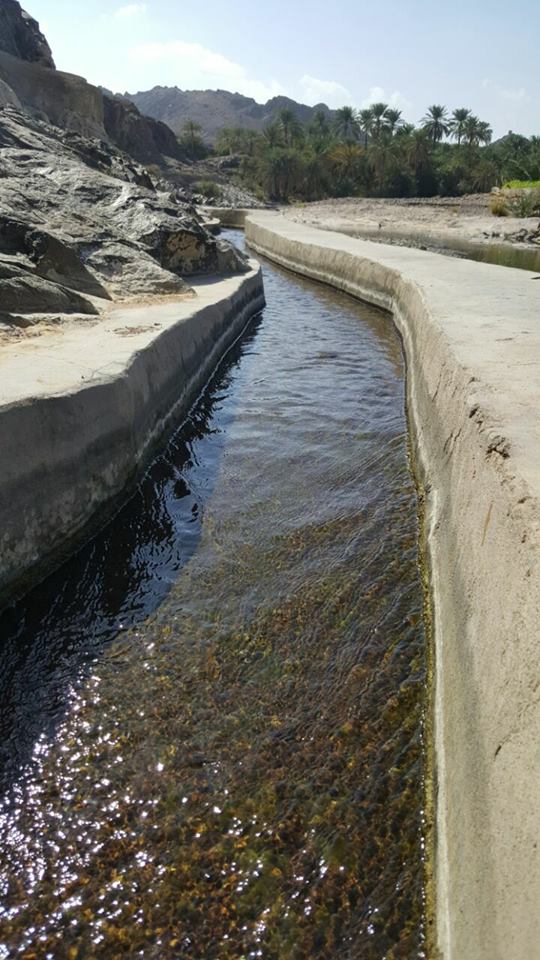
About the Aflaj of Oman
A falaj (pl aflaj) is a water management and irrigation system that has been used in Oman for over a millennium. Each falaj is relatively small, where the flow rate of water provided by the falaj is only sufficient to support the agriculture in a small community. For this reason there are over 4000 aflaj in Oman, 3000 of which are still active, and each of these is managed by the local falaj community, as they have been throughout their long and successful history.
While this defines the aflaj, they are in fact much more than that. They are
Naturally Sustainable...
The aflaj are a testament to traditional knowledge. A falaj taps water at higher elevations and uses only gravity to convey the water to a village where it is used for domestic and agricultural purposes. Because it relies only on gravity, unlike groundwater pumping, the aflaj of Oman are a naturally sustainable source of water and has thus allowed for settlement and agriculture in a harsh, arid environment.
Socially Sustainable...
However the traditional knowledge of the aflaj goes beyond the physical structure of the aflaj that allows for a sustainable water source, but also includes the social cooperation needed to manage the falaj and distribution of the water it provides, in a manner consistent with the culture and values of the community, and thus assures it is also socially sustainable.
An Icon of Oman’s Culture and Heritage...
Given the long history of the aflaj in Oman, it is not surprising that the aflaj are part of Oman’s cultural identity. Not only must the aflaj reflect Oman’s culture and values, but it has certainly helped shape Oman’s culture and heritage.
Under threat...
Unfortunately this defining characteristic of Oman’s culture and heritage is in danger of being lost. In the post-1970 oil economy of Oman, aggressive groundwater pumping has reduced the water in the aquifers on which the aflaj rely, reducing their flow rates and productivity of the aflaj.
At the same time, Oman has seen dramatic socio-economic changes since 1970 leading to expanding income and opportunities. For this reason, the aflaj which were once a necessity to the economic life in the interior, is now of little economic significance. For this reason, the young generation has little interest in the aflaj and seeks work outside falaj communities. Hence the traditional knowledge of sustainable natural resource management embodied in the aflaj, and the culture and heritage of the aflaj, are under significant threat of dying out. This is true despite the fact that the aflaj account for thirty percent of Oman’s groundwater, and are thus crucial to water management in Oman.
The existential threat to the aflaj, and the loss of traditional knowledge, heritage, and culture that would ensue, has led the University of Nizwa to found the Aflaj Research Unit. The purpose of the Aflaj Research Unit is to document the multi-faceted contribution of the aflaj to traditional knowledge, culture and heritage, biodiversity, and the economy of Oman, as well as to understand the challenges facing the aflaj so as to develop plans to ensure the sustainability of the aflaj. Additional, the Aflaj Research Unit exists to raise public awareness on the contributions of the aflaj and the threats it faces by engaging the community through educational programs, social media, and the production of literature, video, and other materials. To read more about the Aflaj Research Unit click here.



